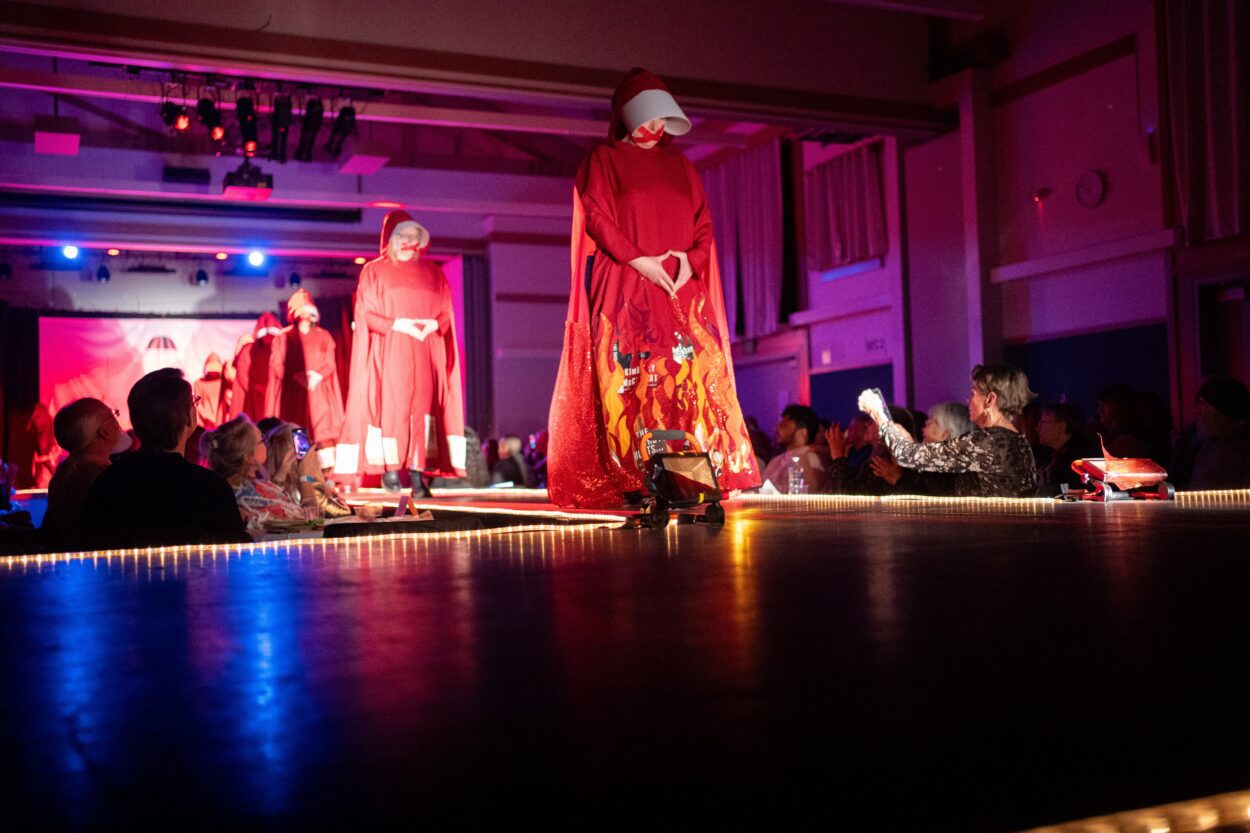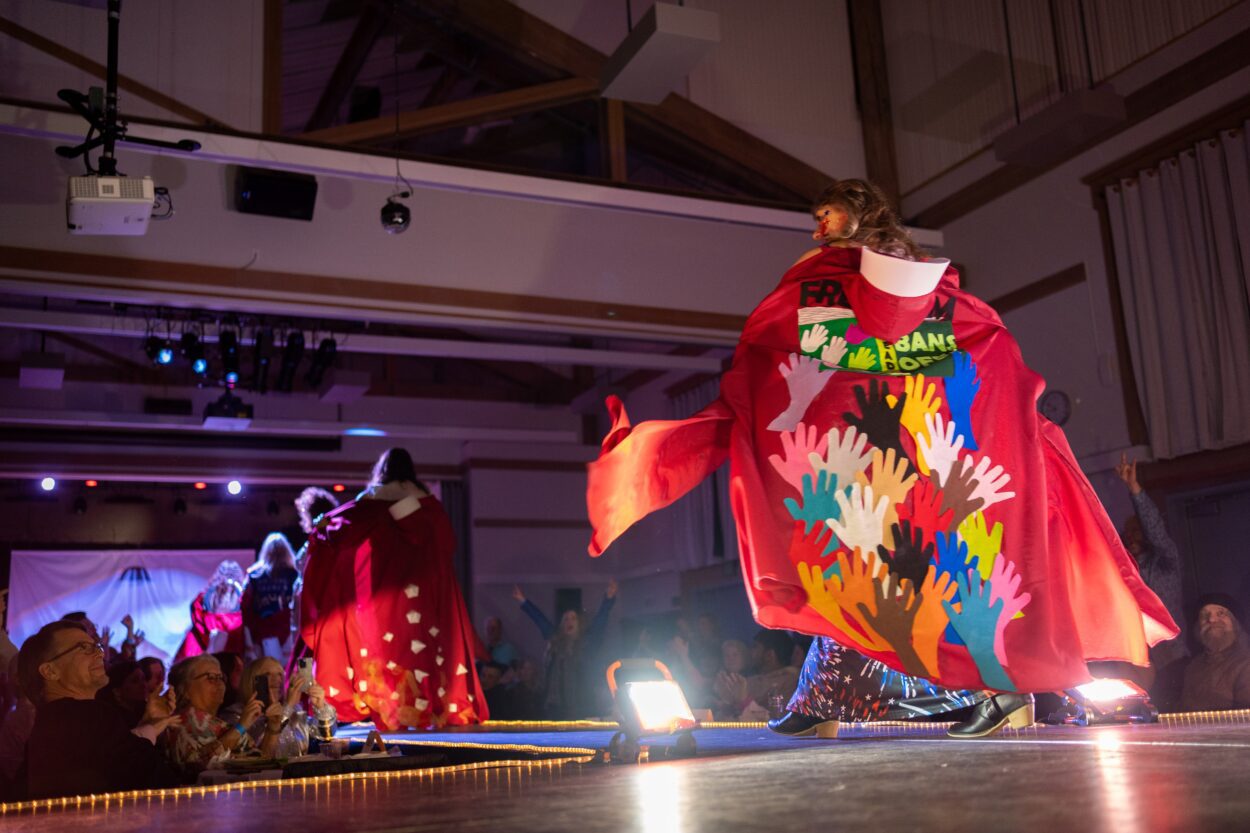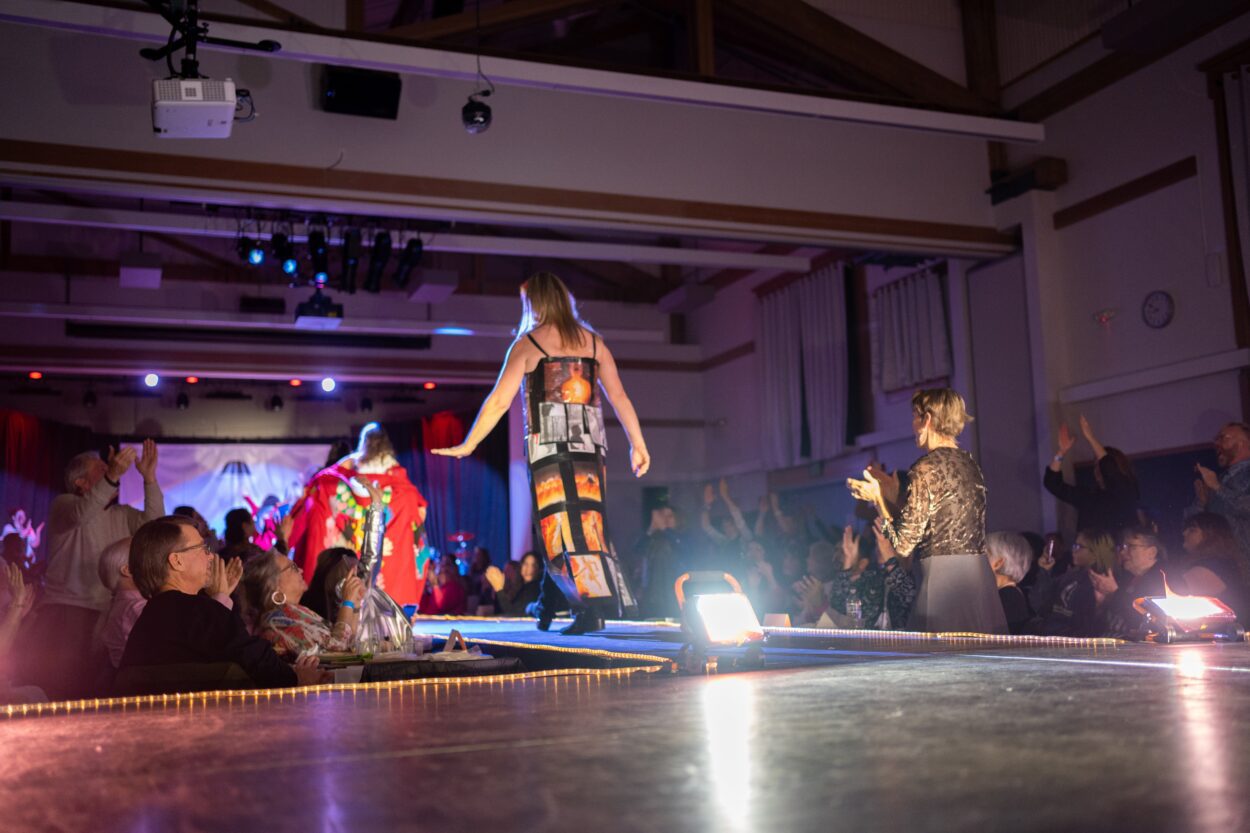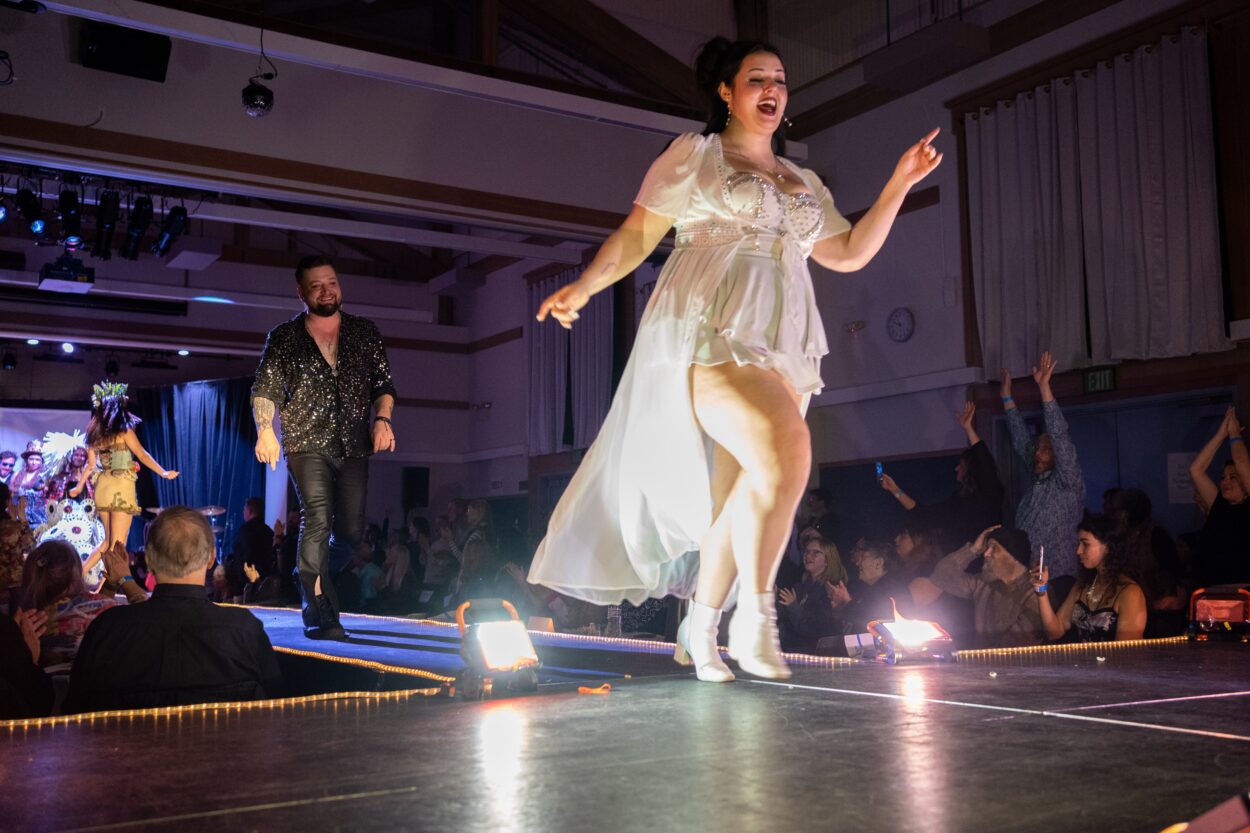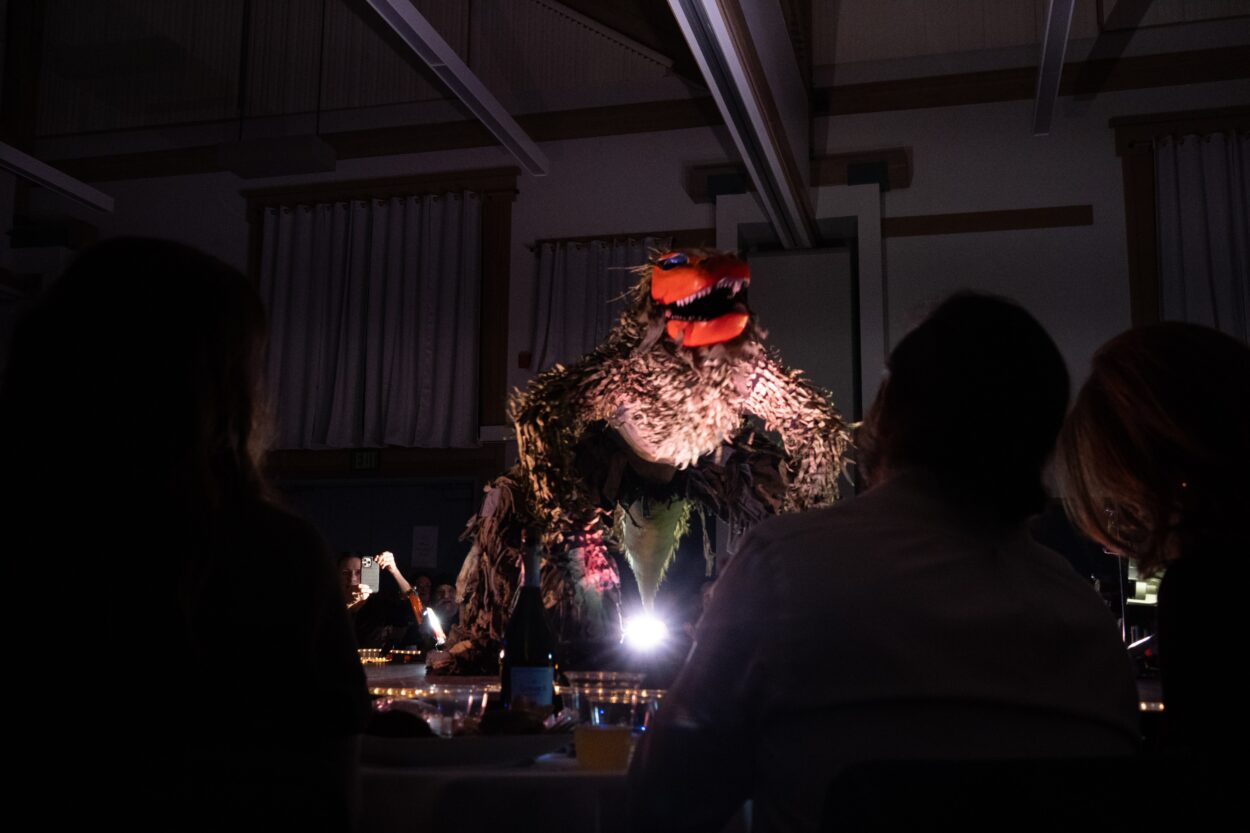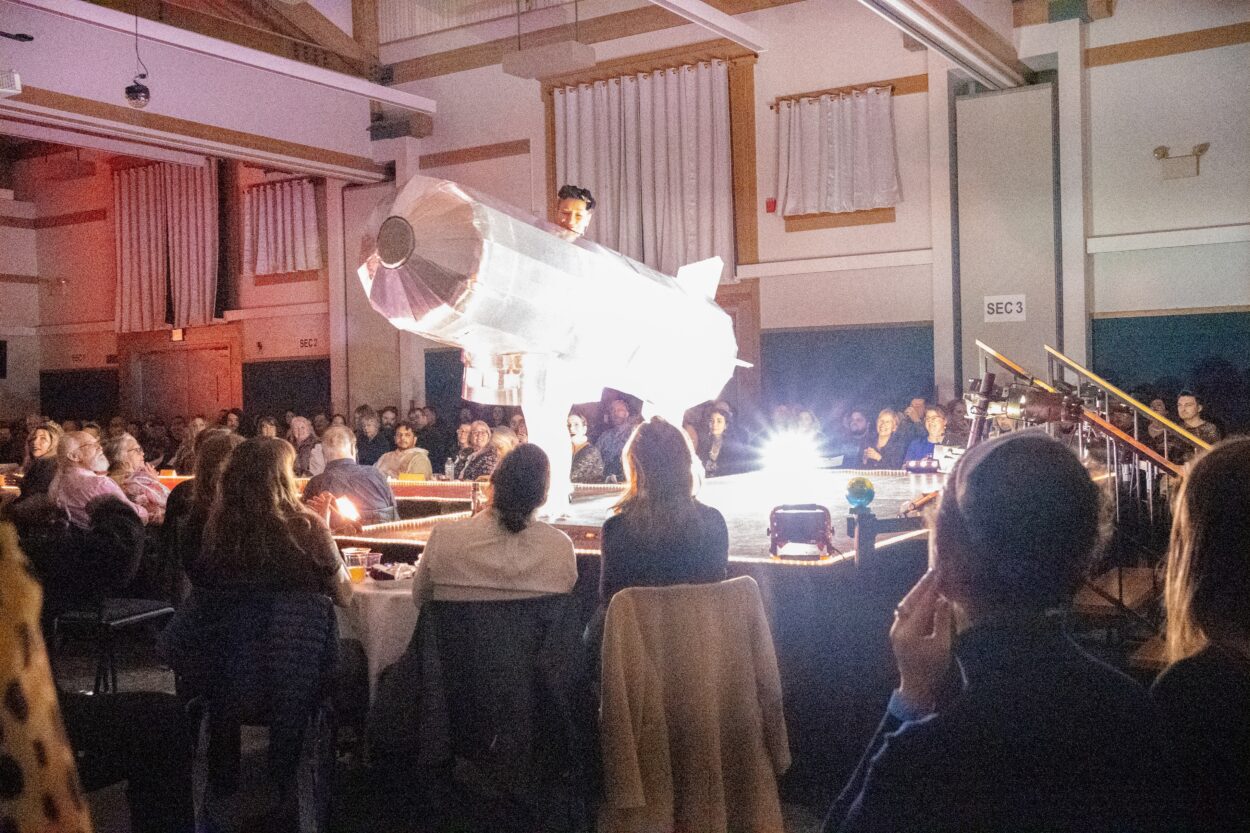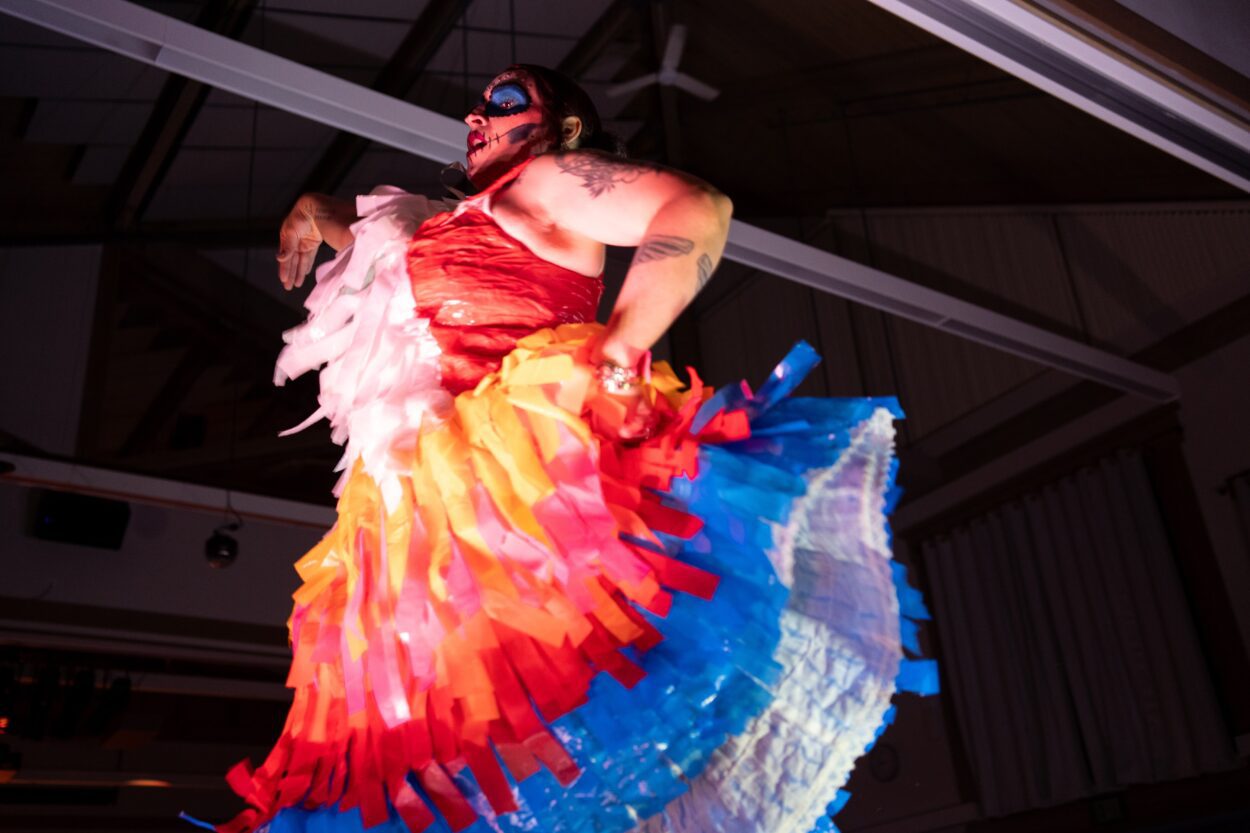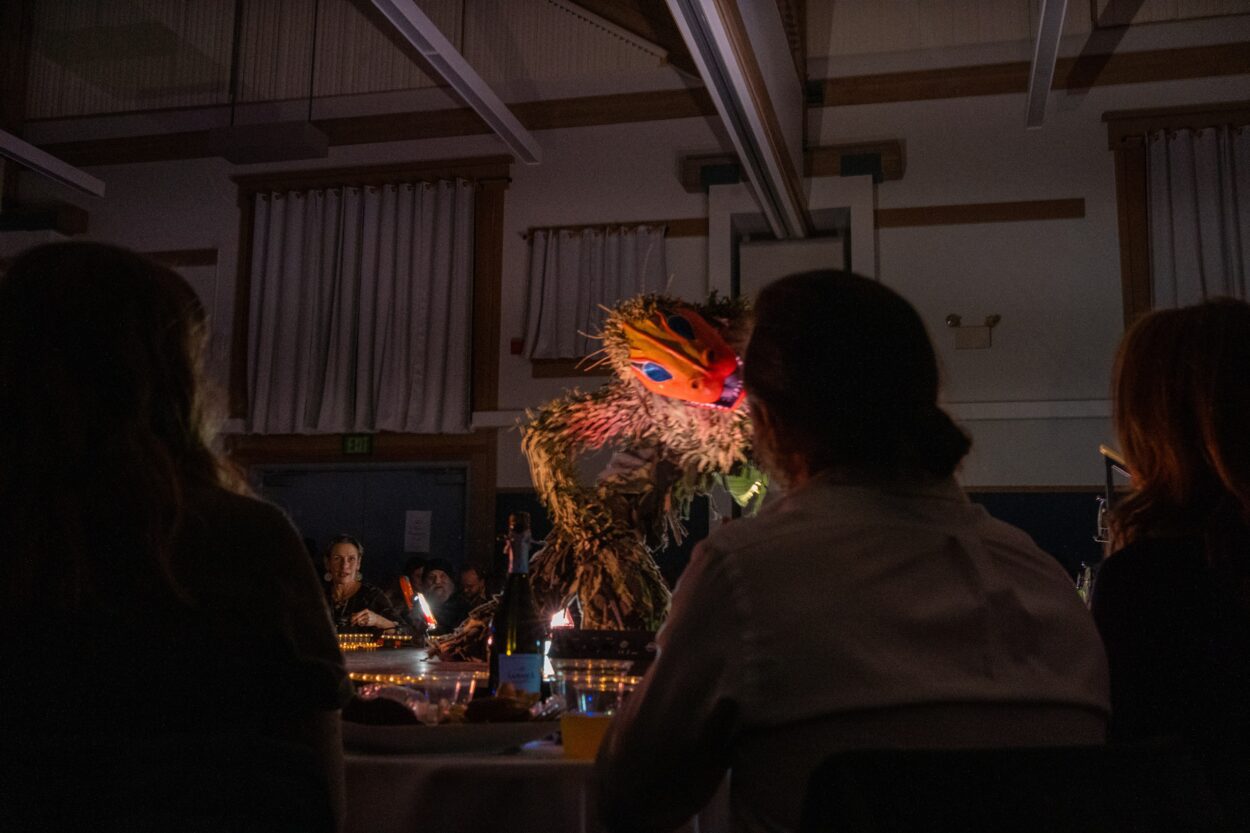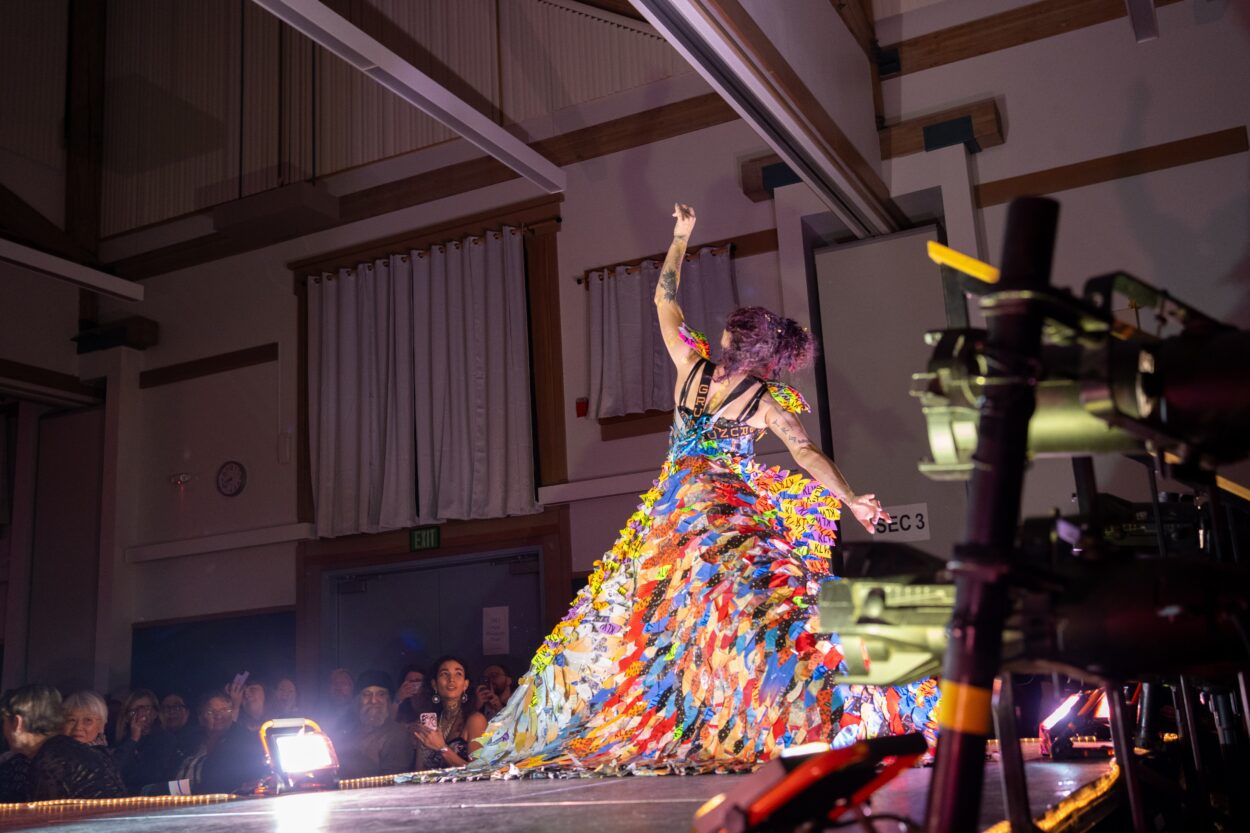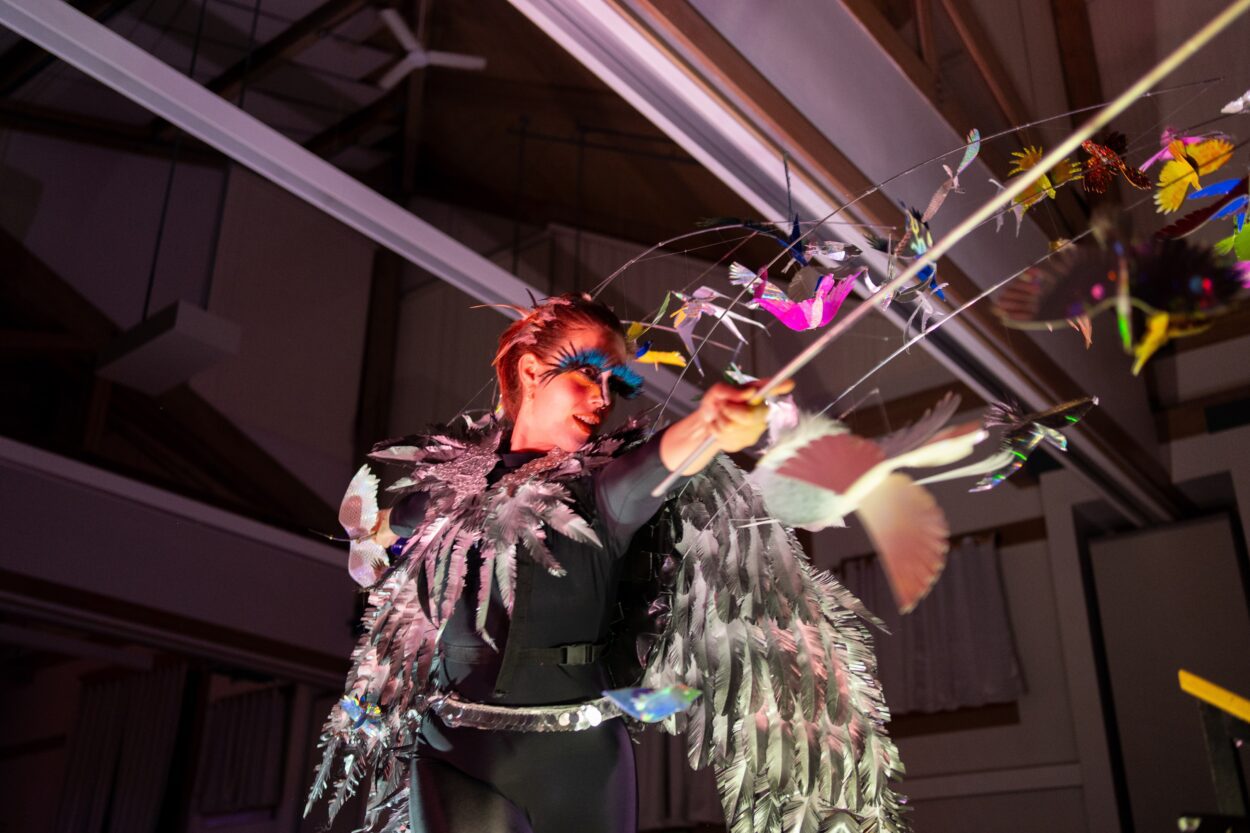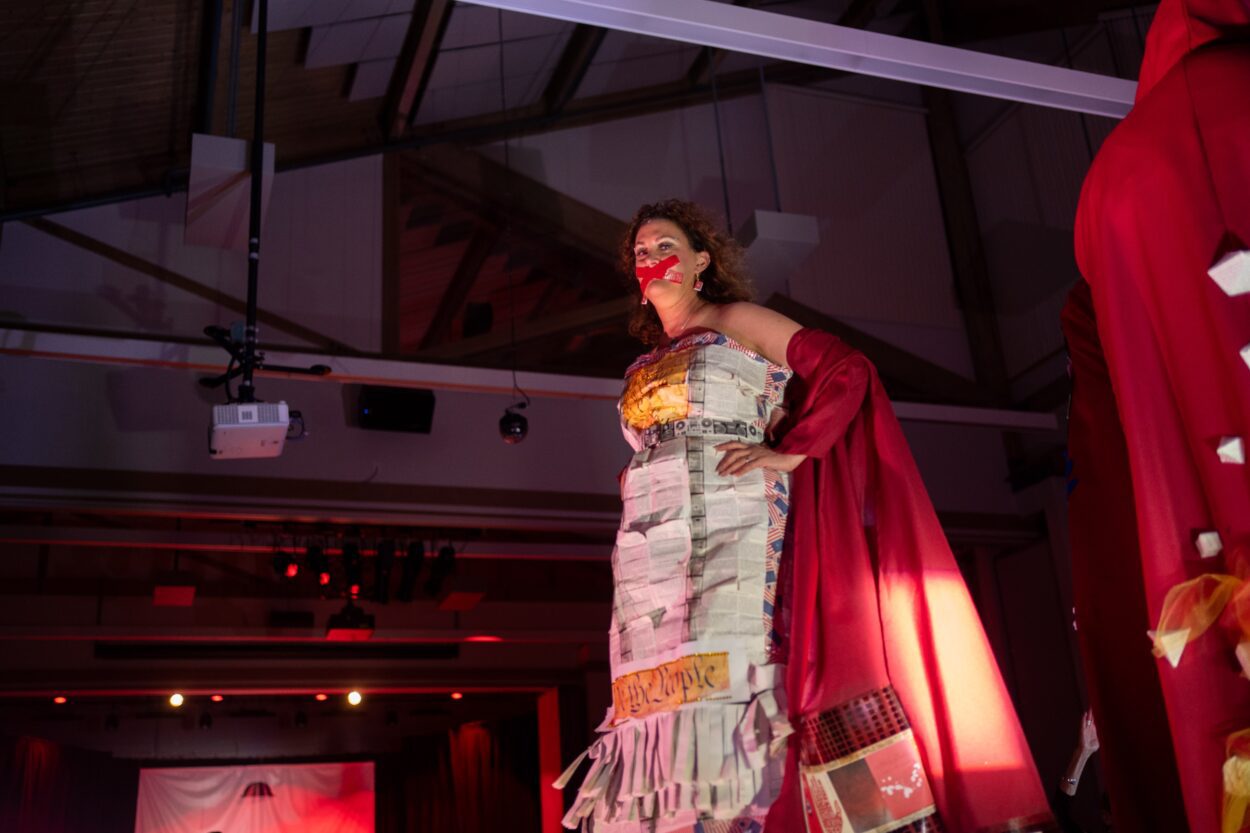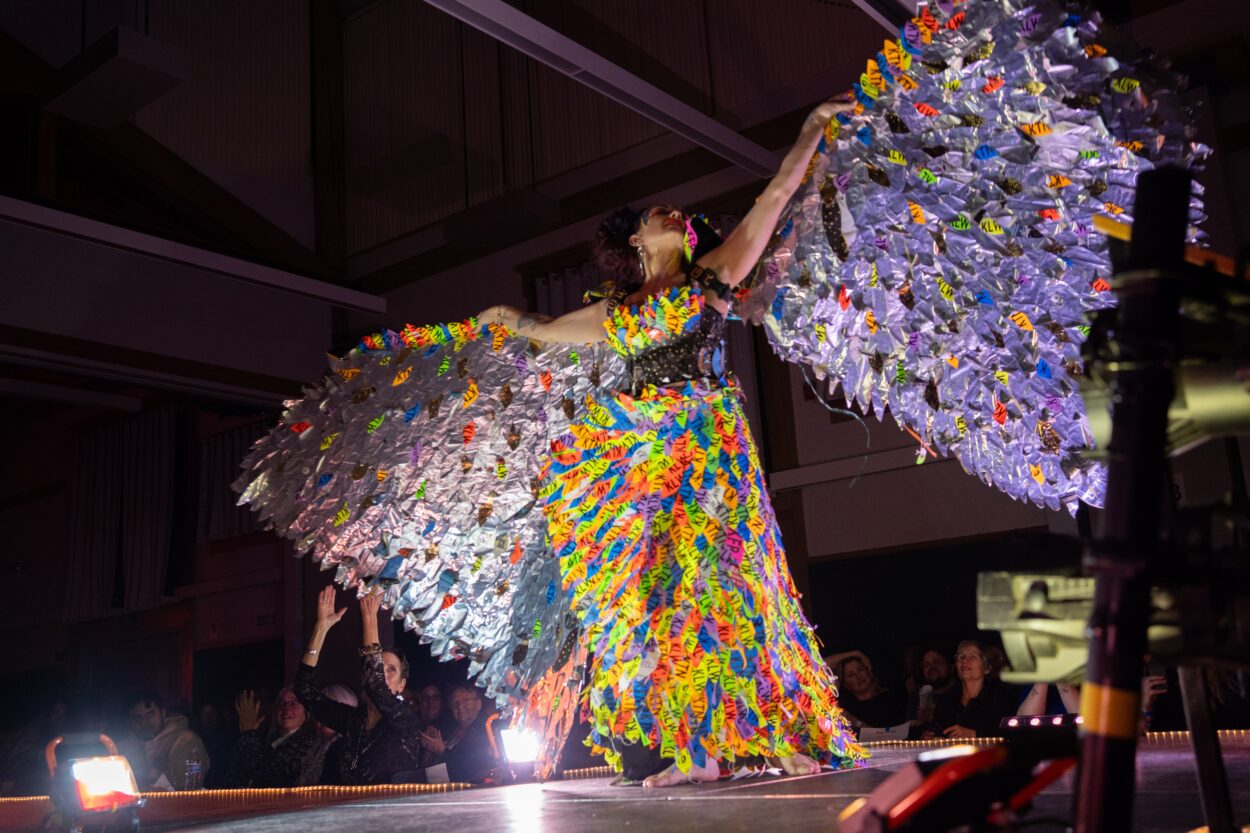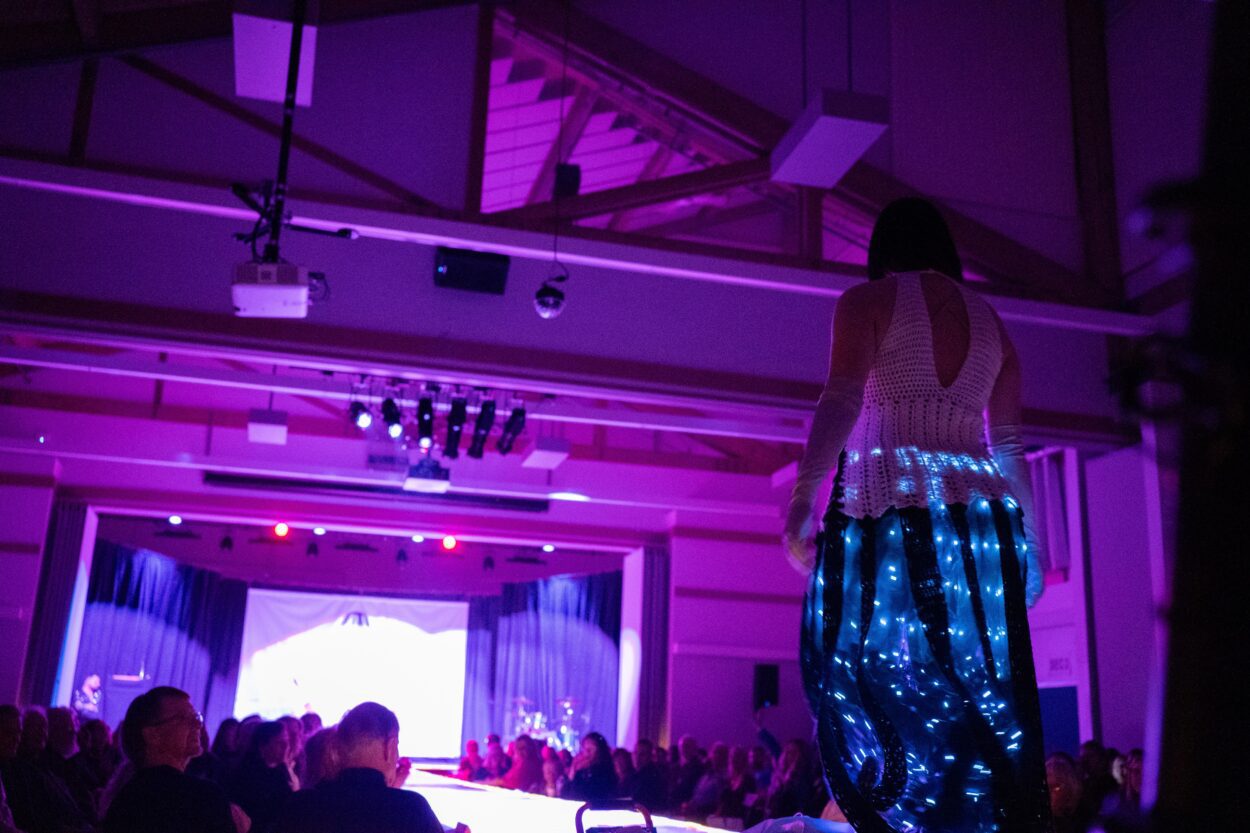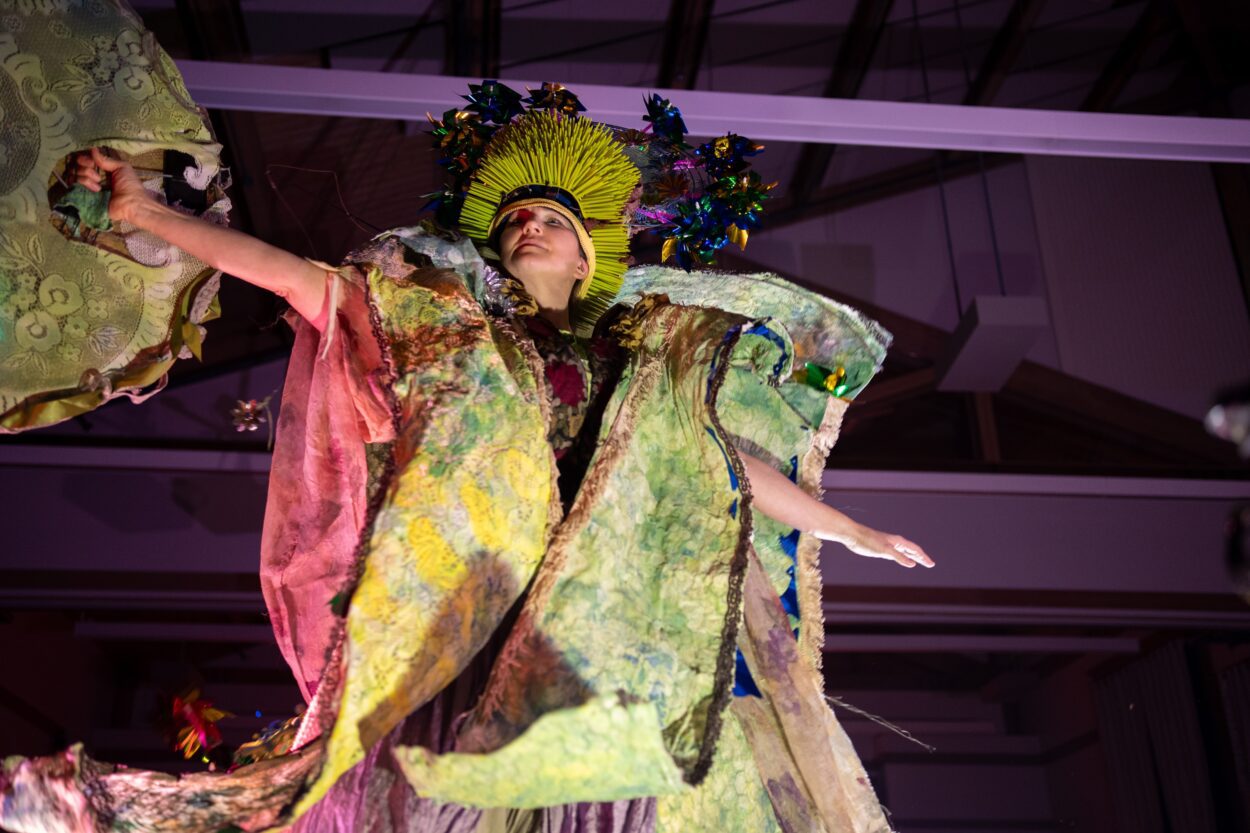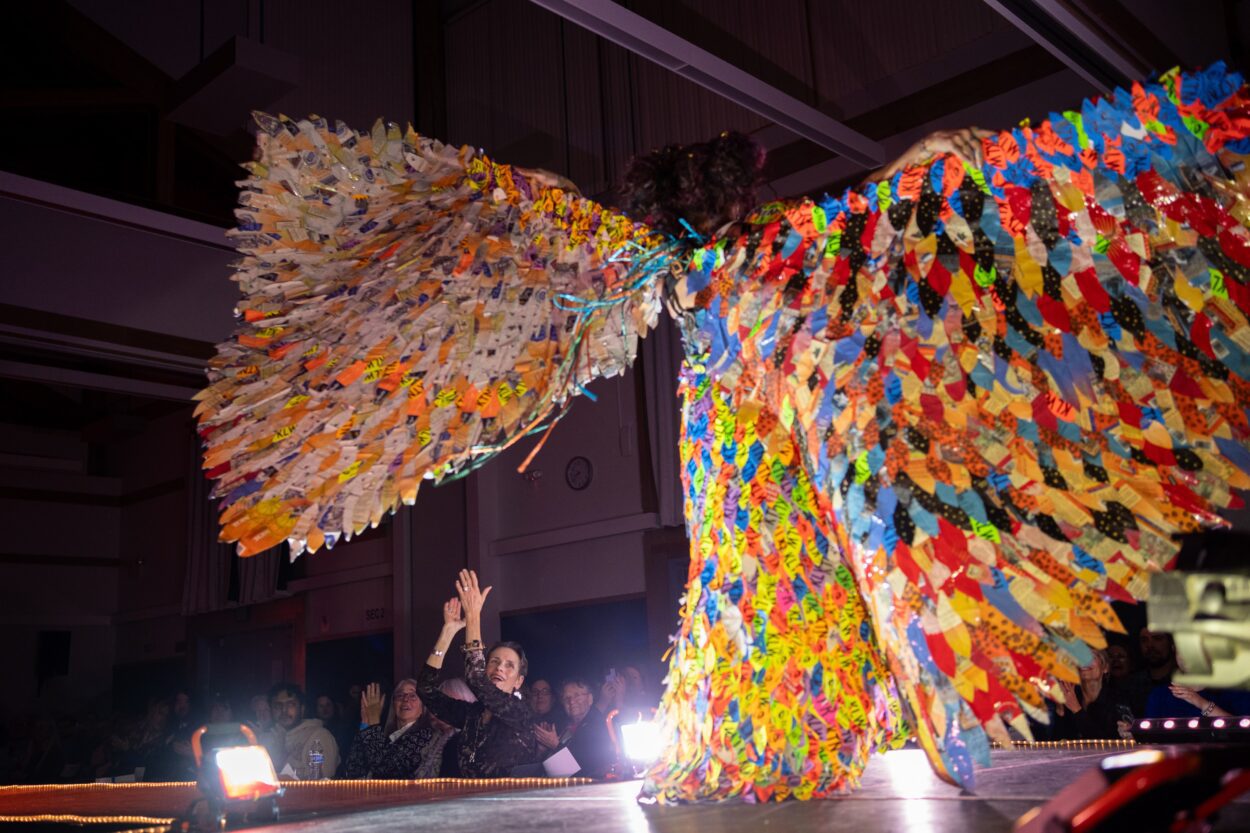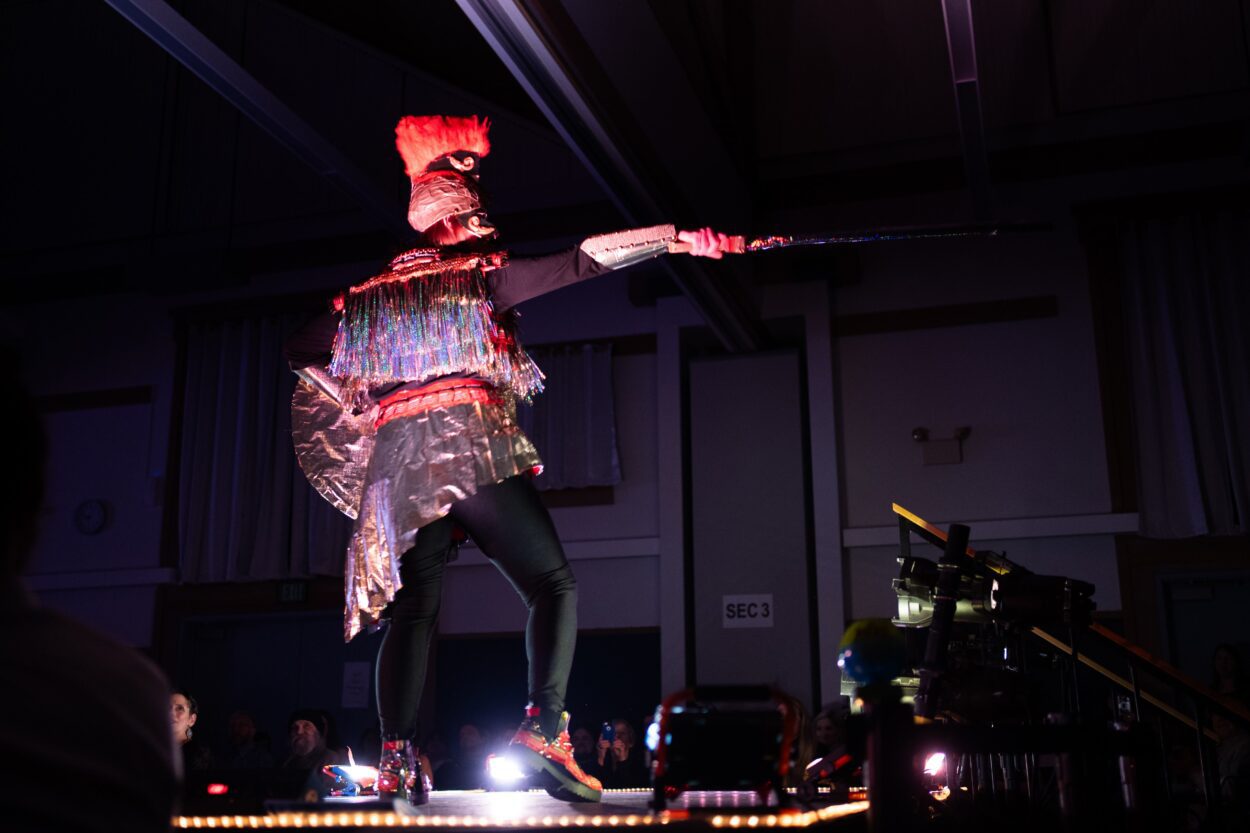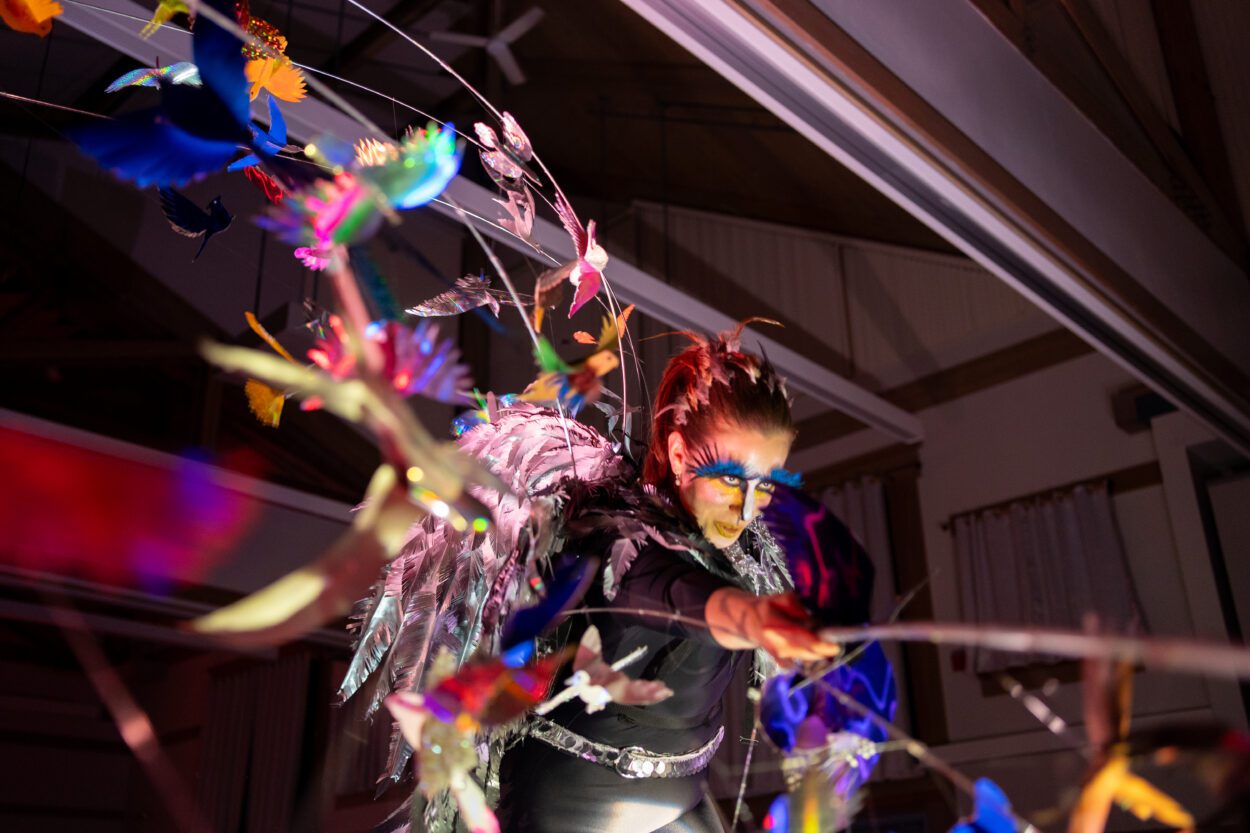
Artists explore self-expression and the art of deception at Ketchikan’s 38th Annual Wearable Arts Show. The small Alaskan town claims to have the first wearable arts show in the world.
It’s the last night of Wearable Arts and the Ted Ferry Civic Center is absolutely packed. People grab drinks, chat, and take their seats around a long runway jutting out from the stage like a huge “T”. The theme of the night is “The Art of Artifice.” The Sheets, a local band, kick things off.
Brittany Rickard skips onto the stage in a white dress followed by James Vincent, in black sequins. They trade off verses of Blondie’s “One Way or Another.” The singers are also the emcees for the night.
The first act they introduce is by Rhonda Green. The piece’s model, Green’s granddaughter Bailey Slanaker, struts down the runway, decked out in a spinning skirt of stacked buckets. It looks like she’s a hundred different swaying and spinning colors. The crowd is already on their feet.
Then, the show takes a turn for the nightmarish. A creature shoulders its way through the curtains. It stands on four legs with bristled fur like tree bark and stares out at the crowd through blue eyes above a gleaming orange maw. It looks like something from the Studio Ghibli film Spirited Away. It’s the work of artist Evy Posey.
Posey crawls down the stage in captivating, animal-like movements to the beat.
The next act is also a departure from the human world. Bianca Jurczak is modeling a piece inspired by the marketing artifice of zeppelin air travel. Her piece is huge; a giant silver airship. She moves down the runway surprisingly gracefully, trailing steam in her wake.
“It was a lot of work,” Jurczak says later. “First of all, trying to find large enough pieces of whole cardboard. Then it took a month and then hours and hours trying to get the tin foil contact paper to stick to it with a heat gun. So it was a challenge.”
Many of the pieces took inspiration from the landscape and culture of Southeast Alaska. There was Kelsey McNeil’s take on Southeast meets Southwest – a southeast Alaska outlaw with rainbow-tasseled chaps and a big silver western buckle clasping a Grundéns fishing belt. Britta Adam’s, the piece’s model, kicks and jumps her way down the runway like an old-fashioned rodeo star.
Then came Halli and Don Kenoyer’s reimagining of Masaru Sato’s Yojimbo using the weather and the environs of Southeast Alaska or Dawn Luna and Gerry Balluta’s fully crocheted homage to the sometimes deceptive and poisonous fauna of the rainforest around Ketchikan. Vicky O’Brien also crocheted and stitched an outfit inspired by the way the sun moves through the trees in the Tongass National Forest.
Fawn Breese, one of the younger models and artists, bursts onto stage from a roughly seven foot tall steampunk time machine she built with her mom.
“It’s out of a mattress box that we got from Bernie’s and then we put it together and painted it and then added all the different details,” Breese explains backstage.
Then Tori Carl walks down the runway clothed completely in hundreds, maybe thousands, of feathers made from coffee bags and airport bag tags, dragging what looks like a wedding train of them behind her.
At the end of the runway, she spins to reveal what was dragging behind her were huge wings.
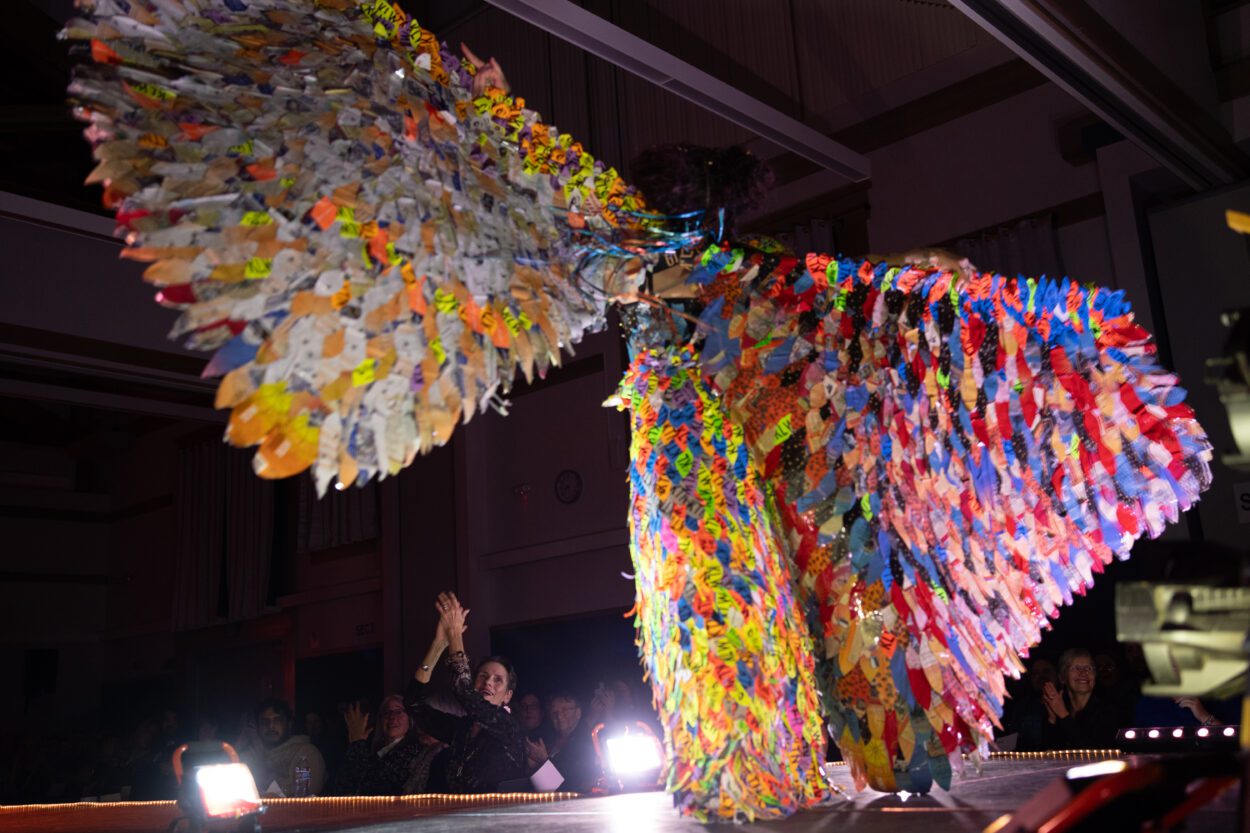
Carl works at Island Air on Prince of Wales Island, which she says is where she got the bag tags, adding that the intricate creation was surprisingly last minute.
“This is very rare. I usually am a little bit more prepared. But yeah, four days to just do the wings and probably two or three days to do the dress,” she laughs after the show.
And then one of the most notable moments in the evening: a banner stretches across the stage, hand-scrawled with mock-Latin. It reads Nolite te bastardes carborundorum. The phrase, taken from the novel The Handmaid’s Tale, loosely translates to “don’t let the bastards grind you down.” From behind it come six figures in red robes, each of their mouths covered by an “X” of red tape.
It’s the Ketchikan librarians. They form a circle at the end of the stage with their backs to the audience. Each red robe is different, featuring flames or hands reaching out for the word “freedom,” or one with a sniper target on the back. Then, each librarian throws open their arms one by one like a prize fighter before a match. Beneath their robes, each model wears a dress with a central message.
One is made from the pages of the Alaska Constitution, another from the pages of Flamer by Mike Curato, a book about a teen grappling with homophobia and bullying. Flamer‘s inclusion in the Ketchikan public library was challenged last year for content the challenger deemed inappropriate.
Librarian Lisa Pearson, who came up with the idea, said it was a reaction to a nationwide trend towards book bans.
“It’s not just a national issue. It’s a statewide and local issue,” Pearson explained backstage before the show. “We feel like we are being intimidated and bullied and we’re kind of tired of being told to sit down and shut up.”
Each librarian’s piece represents their own take on the challenges they’ve had to face over the last year. Beneath her robe, Pearson is dressed as a warrior.
“I’ve got a shield with the word ‘read’ on it. And I’ve got kind of a Germanic bodice made out of pop tabs and key fobs and chains. And my skirt is made out of Alaska statutes and big picture book pages. Basically, I’m just trying to represent the strength that we have as librarians.”
“For me, I went with hands off,” said Librarian Gail Brooks, whose robe is covered in hands. “Hands off my body, hands off my books, hands off everything. When I peel my robe, it’s red, white, and blue.”
Shana Carter made a scaled tunic beneath a fiery robe which she says represents a dragon protecting its hoard – the way a librarian protects books and the people that read them.
Library Director Pat Tully said the performance was cathartic after the challenges library staff have faced over the last year. Her garb is inspired by Maude, a 70’s sitcom character that championed women’s rights.
“When our profession and our own beings are challenged and our ethics are challenged, we’re not going to sit by let that happen,” agrees Kathy Bolling, who is in a dress stitched from the preamble to the US Constitution.
The librarians get a standing ovation on the runway.
Artist and model Loren McCue takes the stage with a unique approach to artifice.
McCue’s piece is an optical illusion all its own. She is dressed in swirling black and white and standing there on the runway, she looks utterly two dimensional – like a life-sized cutout of a sharpie sketch. McCue has been doing the Wearable Arts since the very beginning, 30 years ago.
“I was here from the get go, all of my children were raised in it – Karly, the bird thing, is one of my children,” McCue says.
Her daughter Karly Lesko designed 100 paper birds suspended on movable wires, flown across the runway by Chandler Long.
McCue says that this show started it all – the first wearable art show not just in Alaska but the world. McCue recalls that the show started off humbly 30 years ago, more of a fashion show then what it has become – then it caught on.
According to the Ketchikan Arts and Humanities Council, which hosted the show, the first Ketchikan Wearable Arts was in 1986. That is a year before World of Wearable Art, the international show in New Zealand that made the form of expression famous and often advertises as the original, had their first runway show.
“It’s an amazing show. There is nothing like this,” says McCue. “The energy of a small town and the effort they put into this – we could rival a New York City show, I really believe that.”
At the end of the night, votes were tallied for next year’s theme. “Back to Our Roots” is the winner. The artists, some still clothed in their elaborate works of art, mingle with their adoring fans.
Get in touch with the author at jack@krbd.org.
